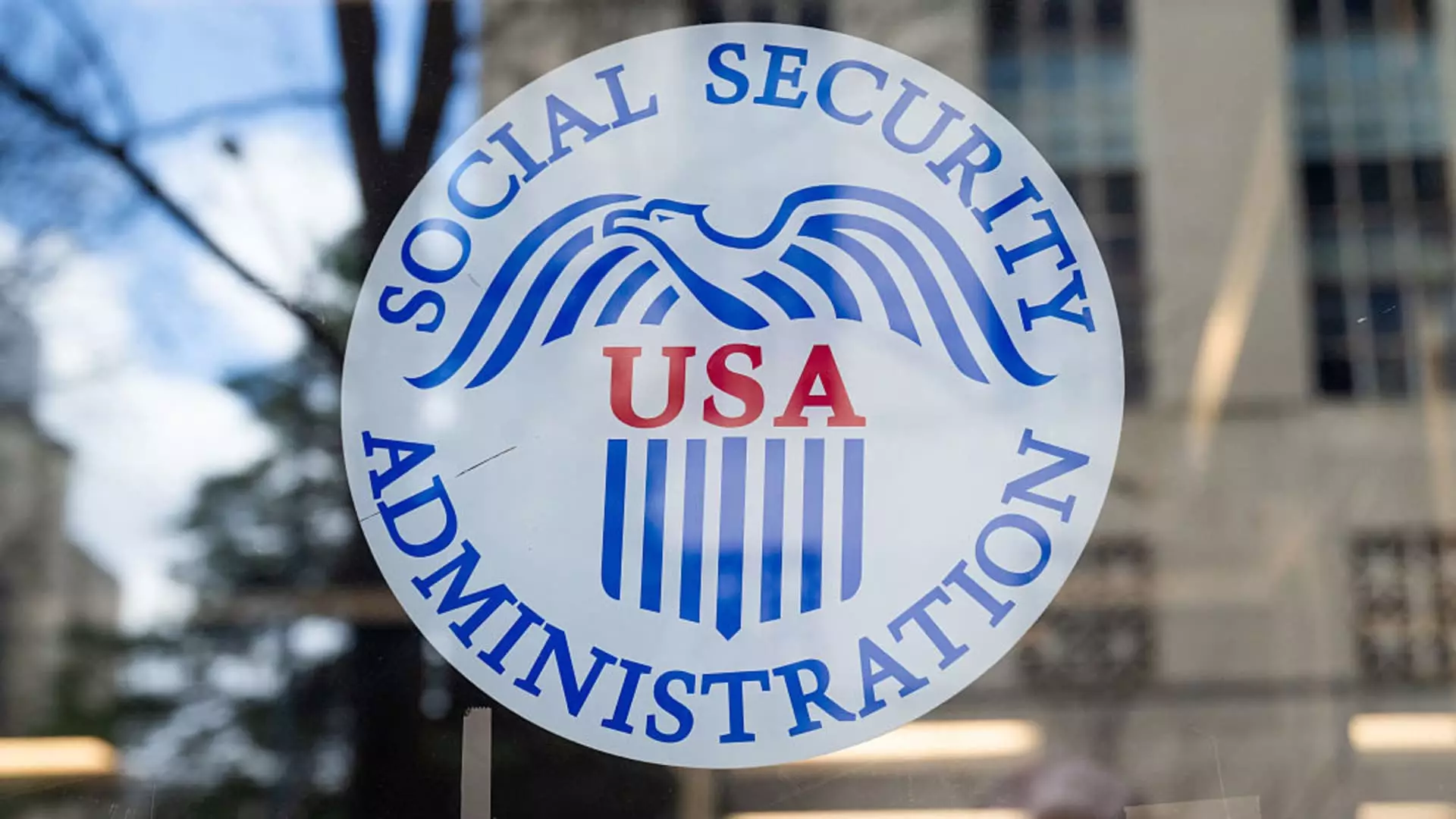The Social Security Administration (SSA) is at a precarious crossroads, primarily due to the controversial reforms instigated under the guise of “government efficiency” during the Trump administration. The recent decisions to cut thousands of jobs and to shutter numerous regional offices have raised a red flag, suggesting that access to critical services will inevitably decline. This situation demands scrutiny, as it essentially puts the future of benefits for millions of Americans in jeopardy. Former SSA deputy commissioner Jason Fichtner articulates a growing concern that these changes will hinder beneficiaries’ ability to access services they fundamentally rely on, especially the most vulnerable populations, including the elderly and individuals with disabilities.
Indeed, a system that has traditionally been a safety net may soon resemble more of a barricade. When citizens encounter prolonged wait times on the SSA’s helpline or glitches on its website, it is not merely an inconvenience; it is a potential life-or-death situation. Imagine elderly citizens who depend on their monthly benefits to survive facing hurdles at every turn. According to experts, such operational fatigue exacerbates the physical and emotional toll on beneficiaries already grappling with aging or disabilities.
The Perils of Rushed Reforms
The SSA’s recent push to modernize its technological infrastructure highlights an urgent need for improvement, but hastening this complex migration is fraught with risks. Reports that the SSA intends to shift “tens of millions of lines of code” from a decades-old programming language, COBOL, within a few months may come back to haunt them. Fichtner points out that proper upgrades typically span years, starting small to pinpoint and rectify bugs before implementing widespread changes. This rush significantly increases the likelihood of error, potentially jeopardizing the very benefits that millions count on.
Technical glitches and coding errors could mean that current recipients might not receive their due payments on time, or worse, that eligibility determinations might be improperly processed. The implications are severe: vulnerable beneficiaries could face delays in essential funds, which might lead to dire situations for those already living paycheck to paycheck. When the rhythm of monthly benefits is disrupted, it leads to crises that could have easily been avoided with more prudent, measured planning.
The Illusory Focus on Fraud
While the motivation behind these reforms may be to root out inefficiency and fraud, experts suggest that the attention is misaligned. The SSA’s administrative budget comprises less than 1% of total outlays; thus, attempting to streamline it further seems misguided at best. The reality is that much larger systemic and financial issues loom on the horizon. The impending depletion of Social Security’s trust funds must take precedence, and misguided administrative cuts may hinder the essential reforms needed to secure the program’s future.
Romina Boccia from the Cato Institute emphasizes that by squandering resources on superficial changes, we risk missing out on vital reform opportunities that can meaningfully address the trust fund’s financial sustainability. In the face of potential benefit cuts and depletion of funds by 2033, the emphasis should be less about chasing shadows in the efficiency of SSA operations and more about fundamentally restructuring how we fund benefits in the long run.
Policy at a Crossroads
The current trajectory may lead to an inefficacious bureaucracy that endangers both beneficiaries’ access and the very integrity of the Social Security system. Listening to contrasting opinions is essential, but the alarming realities created by these policies should not be overlooked. As we dissect these moves within the government, it becomes evident that relying on swift efficiency cuts could damage more than it saves.
The proposals initiated by the Department of Government Efficiency may have been designed to confront long-standing issues; however, this point is overshadowed by the misguided execution of these initiatives. The unfortunate reality is that when you overlook the infrastructure of an essential agency like the SSA, you risk creating more significant barriers that could affect the lives of those who’ve contributed to the system.
Consequently, this also raises questions about the long-term vision of government in its duty to safeguard the welfare of its citizens. Without balanced, thoughtful change, we are at risk of plunging Social Security into chaos, jeopardizing the benefits designed to protect the very individuals who have supported this foundational program. As the debate around governmental efficiency versus beneficiary accessibility continues to unfold, one thing remains clear: America’s social safety net hangs precariously in the balance, and the stakes could not be higher.

